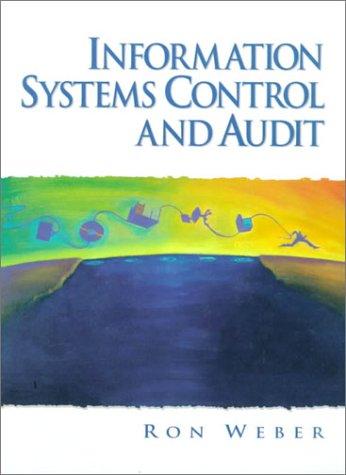Daintree Ltd. is a large retailer that operates department stores in all major cities throughout Australia. Recently
Question:
Daintree Ltd. is a large retailer that operates department stores in all major cities throughout Australia. Recently it has expanded its operations into Southeast Asia. Although each store operates some of its own information systems, all significant information systems are developed and implemented by the corporate information systems staff located in Brisbane. The company's mainframe computers are also sited in Brisbane. These machines are used to support companywide applications, such as point-of-sale processing, corporate sales reporting, and credit-card billing.
You are a manager in the external audit firm that has been carrying out the external audit of Daintree for the past three years. As part of your analytical review procedures, one of the items you have been monitoring is the amounts spent on information systems maintenance across each of Daintree's major application systems. Daintree expends about 65 percent of its information systems budget on maintenance. This percentage has been gradually increasing as new development work has been curtailed by an expenditure cap that top management has placed on the information systems function.
A matter that concerns you is the relative change in the amounts spent on repair maintenance, adaptive maintenance, and perfective maintenance. Three years ago when your firm first commenced the audit of Daintree, total expenditure on maintenance was broken up as follows: repair maintenance20 percent; adaptive maintenance- 70 percent; perfective maintenance- 10 percent. In this past year, the figures are 5 percent, 15 percent, and 80 percent respectively. You have pursued the matter with the vice president of information systems, who was appointed in the same year as your audit firm. She claims the change in the percentage allocation across the three categories of maintenance has occurred for two reasons. First, she argues she has improved considerably the professionalism of the information systems staff to the point where the quality of the work they are now undertaking has obviated the need for extensive repair and adaptive maintenance. Second, she argues the previous reporting system for maintenance was inaccurate and, as a result, prior classification of maintenance work was erroneous.
During a further interview with the vice president of information systems, you obtain additional information about how the maintenance reporting system works. The vice president indicates that each programmer who undertakes maintenance must complete a maintenance reporting form that describes the nature of the work done and the resources expended on the work. The programming manager then reviews and classifies the work as either repair maintenance, adaptive maintenance, or perfective maintenance. He enters this data into computer-based maintenance reporting system he developed, and each week he gives a summary report to the vice president. She reviews his work and the overall report. She has high faith in his abilities, however, because they both worked closely together in her previous employment. He was regarded as the best programmer on staff with her previous employer. Indeed, she regards it as a major coup that she managed to attract him to his current position as programming manager, even though she had to offer him a sizable increase in compensation. She considers the maintenance reporting system he developed under her guidance to be an outstanding success. Moreover, the information systems steering committee has been highly complimentary about the reports provided by the system and the overall reduction in repair and adaptive maintenance that has occurred.
Required. Briefly describe any concerns you have, if any, in relation to maintenance expenditures and their classification. If you have some concerns, do they have any implications for the quality of data presented in the financial statements? Do you believe the conduct of the audit needs to be altered in light of your findings about maintenance? If so, how should the audit be altered?
Step by Step Answer:






